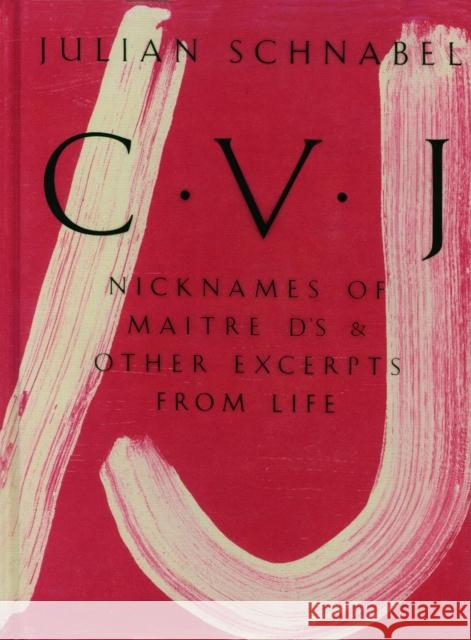Julian Schnabel: Cvj: Nicknames of Maitre D's & Other Excerpts from Life, Study Edition » książka
Julian Schnabel: Cvj: Nicknames of Maitre D's & Other Excerpts from Life, Study Edition
ISBN-13: 9783775740562 / Angielski / Miękka / 2016 / 240 str.
Julian Schnabel: Cvj: Nicknames of Maitre D's & Other Excerpts from Life, Study Edition
ISBN-13: 9783775740562 / Angielski / Miękka / 2016 / 240 str.
(netto: 42,29 VAT: 5%)
Najniższa cena z 30 dni: 44,40
ok. 10-14 dni roboczych
Dostawa w 2026 r.
Darmowa dostawa!
In 1987, at age 36, Julian Schnabel (born 1951) was not only represented in some of the most important exhibitions of his time; retrospectives of his works were already being celebrated in major museums such as the Stedelijk Museum Amsterdam, the Tate Gallery in London and the Centre Pompidou in Paris. In 1987 Schnabel also wrote his book, CVJ, giving an account of his life: how he left Texas in 1973 to return to his hometown of New York City, hung out in Max's Kansas City, met Sigmar Polke, Blinky Palermo, Ross Bleckner and numerous other people in the scene, and traveled to Europe to study the Old Masters--experiences and observations that are both poetic and fun to read. It is also fascinating to see the oeuvre he had produced up to that point: the Plate Paintings with their splintered surfaces, paintings in oil and wax, on velvet and tarpaulin, with -dirt- and cracks and found objects that project into space, as well as drawings and sculptures. Julian Schnabel: CVJ, Study Edition is an accessibly priced, reader-format facsimile edition of the 1987 book, offering a new opportunity to assess Schnabel's influence on younger generations of artists and on the current debates on painting.
Mit 36 Jahren - da war Julian Schnabel nicht nur in den wichtigsten Ausstellungen seiner Zeit vertreten, sondern feierte bereits in den großen Museen, wie im Stedelijk Museum, in der Tate, London oder im Centre Pompidou, Paris seine Retrospektiven. Da schreibt er dieses Buch CVJ und erzählt aus seinem Leben: Wie er 1973 aus Texas zurück in seine Geburtsstadt New York City kommt, im Max's Kansas City abhängt, Sigmar Polke, Blinky Palermo, Ross Bleckner und die vielen anderen der Szene trifft und auch nach Europa reist, um die alten Meister zu studieren - Erfahrungen und Beobachtungen poetisch wie amüsant zu lesen. Und zugleich faszinierend zu sehen, welches _uvre er bis dahin vorgelegt hat: die Plate Paintings in ihrer zersplitterten Oberfläche, Gemälde in Öl und Wachs, auf Samt und Zeltplanen, mit "Schmutz" und Schrunden und in den Raum ragende objets trouvés, Zeichnungen und Skulpturen. Unübersehbar der Einfluss auf eine jüngere Künstlergeneration§§und die heutige Debatte um Malerei.











